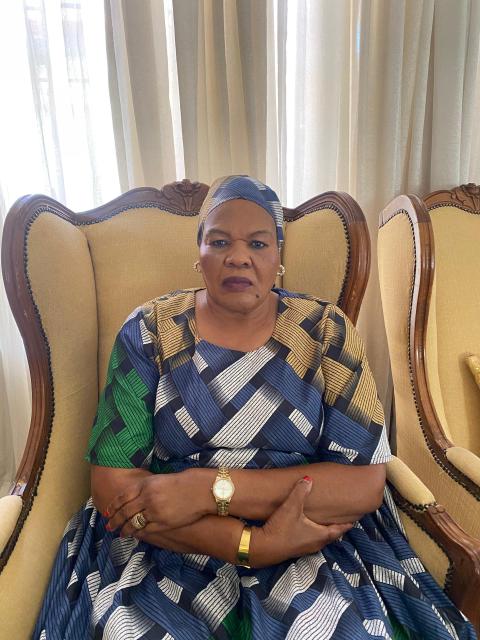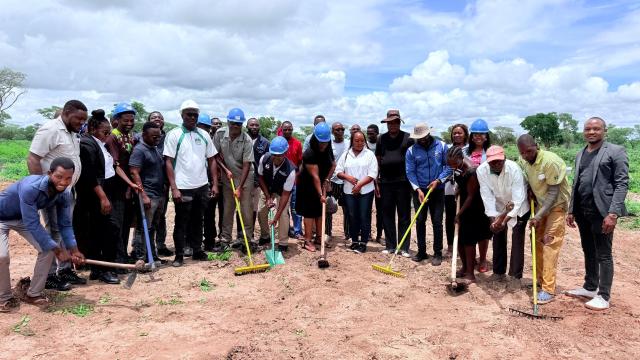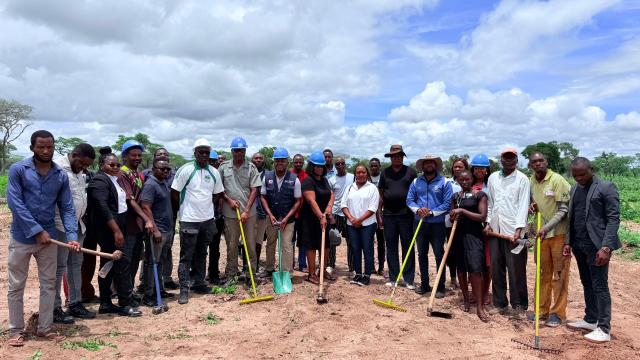
Salome Kambala, acting national spokesperson of the National Organisation of Parents in Education (NAOPE). (Photo: Contributed)

Okatana Constituency councillor Petrus Shigwedha Ashipala. (Photo: Contributed)

ONTINDA - A Top Teenagers FC player in action. (Photo: Contributed)

GROOTFONTEIN, 19 December 2025 - The accident scene where two trucks and a passenger bus were involved in a collision Friday afternoon outside Grootfontein in the Otjozondjupa Region. (Photo: Contributed)

The Communications Regulatory Authority of Namibia (CRAN) Board of Directors chairperson, Tulimevava Mufeti. (Photo: Contributed)

KATIMA MULILO, 18 December 2025 - Zambezi Region Governor, Dorothy Kabula is urging residents to guard against gender-based violence and human trafficking this festive season. (Photo: Contributed)

MAPOREZA, 19 December 2025 - The Kavango West Regional Directorate of Education, Innovation, Youth, Sports, Arts and Culture officially handing over construction sites to the Namibia Training Authority (NTA) at Maporeza village in the Kavango West Region on Friday. (Photo by: Lylie Joel) NAMPA

MAPOREZA, 19 December 2025 - The Kavango West Regional Directorate of Education, Innovation, Youth, Sports, Arts and Culture officially handing over construction sites to the Namibia Training Authority (NTA) at Maporeza village in the Kavango West Region on Friday. (Photo by: Lylie Joel) NAMPA

(251226) -- SUIFENHE, Dec. 26, 2025 (Xinhua) -- Police officers inspect a China-Europe freight train at the south yard of Suifenhe Railway Station in Suifenhe, northeast China's Heilongjiang Province, on Dec. 25, 2025. As a vital part of the eastern corridor of the China-Europe freight train network, the Suifenhe Railway Port has handled more than 4,000 China-Europe freight train trips since its launch in 2018, carrying over 390,000 TEUs of cargo, according to data from China Railway Harbin Group Co., Ltd. (Photo by Qu Yiwei/Xinhua)

(251226) -- SUIFENHE, Dec. 26, 2025 (Xinhua) -- An aerial drone photo taken on Dec. 26, 2025 shows the China-Europe freight trains at the south yard of Suifenhe Railway Station in Suifenhe, northeast China's Heilongjiang Province. As a vital part of the eastern corridor of the China-Europe freight train network, the Suifenhe Railway Port has handled more than 4,000 China-Europe freight train trips since its launch in 2018, carrying over 390,000 TEUs of cargo, according to data from China Railway Harbin Group Co., Ltd. (Photo by Qu Yiwei/Xinhua)

(251226) -- SUIFENHE, Dec. 26, 2025 (Xinhua) -- An aerial drone photo taken on Dec. 26, 2025 shows the China-Europe freight trains at the south yard of Suifenhe Railway Station in Suifenhe, northeast China's Heilongjiang Province. As a vital part of the eastern corridor of the China-Europe freight train network, the Suifenhe Railway Port has handled more than 4,000 China-Europe freight train trips since its launch in 2018, carrying over 390,000 TEUs of cargo, according to data from China Railway Harbin Group Co., Ltd. (Photo by Qu Yiwei/Xinhua)

(251226) -- SUIFENHE, Dec. 26, 2025 (Xinhua) -- Transshipment operations are conducted for the China-Europe freight trains at a container transshipment yard of Suifenhe Railway Station in Suifenhe, northeast China's Heilongjiang Province, on Dec. 25, 2025. As a vital part of the eastern corridor of the China-Europe freight train network, the Suifenhe Railway Port has handled more than 4,000 China-Europe freight train trips since its launch in 2018, carrying over 390,000 TEUs of cargo, according to data from China Railway Harbin Group Co., Ltd. (Photo by Qu Yiwei/Xinhua)

(251226) -- CHANGCHUN, Dec. 26, 2025 (Xinhua) -- This image taken in November 2025 shows a female Siberian tiger and her five cubs at the Northeast China Tiger and Leopard National Park in Hunchun, northeast China's Jilin Province. TO GO WITH "China reports its first sighting of wild Siberian tiger quintuplets" (Xinhua)

(251226) -- XUNKE, Dec. 26, 2025 (Xinhua) -- Tourists visit a rime-themed scenic spot in Xunke County, northeast China's Heilongjiang Province, on Dec. 26, 2025. (Photo by Wang Dong/Xinhua)

(251226) -- XUNKE, Dec. 26, 2025 (Xinhua) -- Tourists take photos at a rime-themed scenic spot in Xunke County, northeast China's Heilongjiang Province, on Dec. 26, 2025. (Photo by Wang Dong/Xinhua)

(251226) -- XUNKE, Dec. 26, 2025 (Xinhua) -- A tourist takes photos at a rime-themed scenic spot in Xunke County, northeast China's Heilongjiang Province, on Dec. 26, 2025. (Photo by Wang Dong/Xinhua)